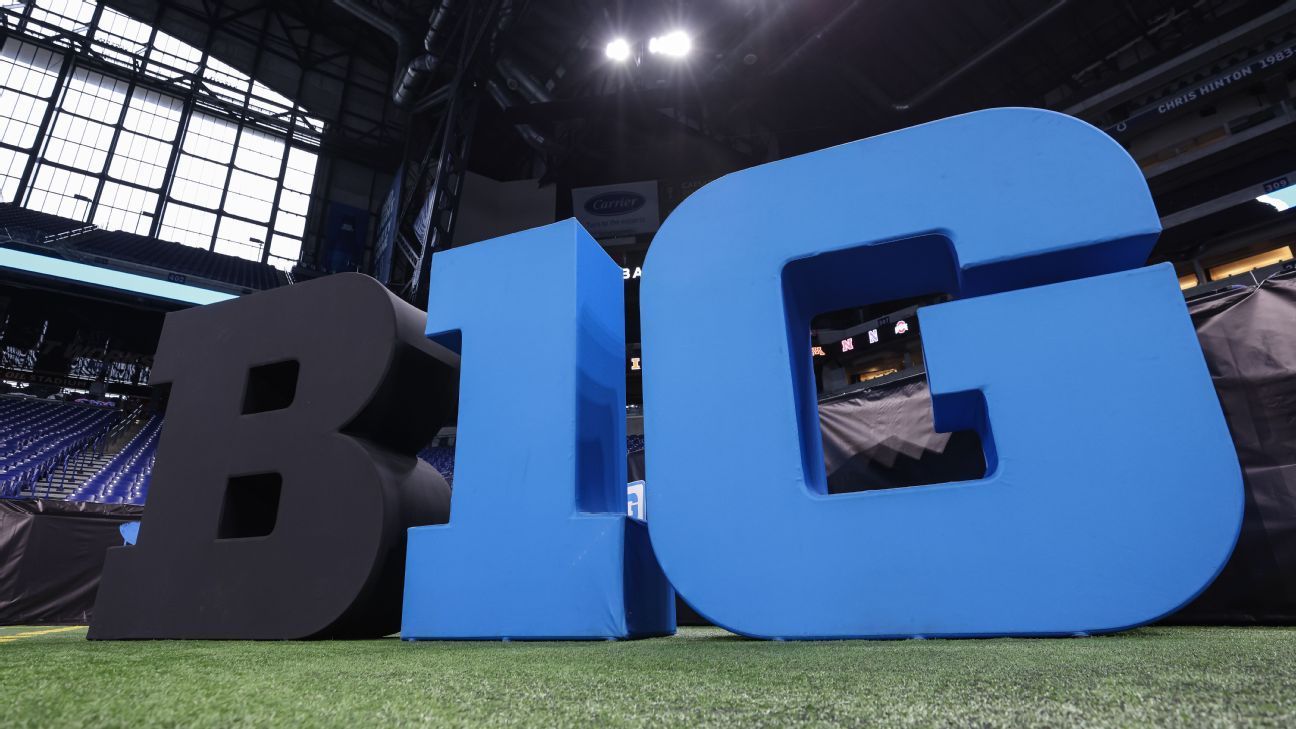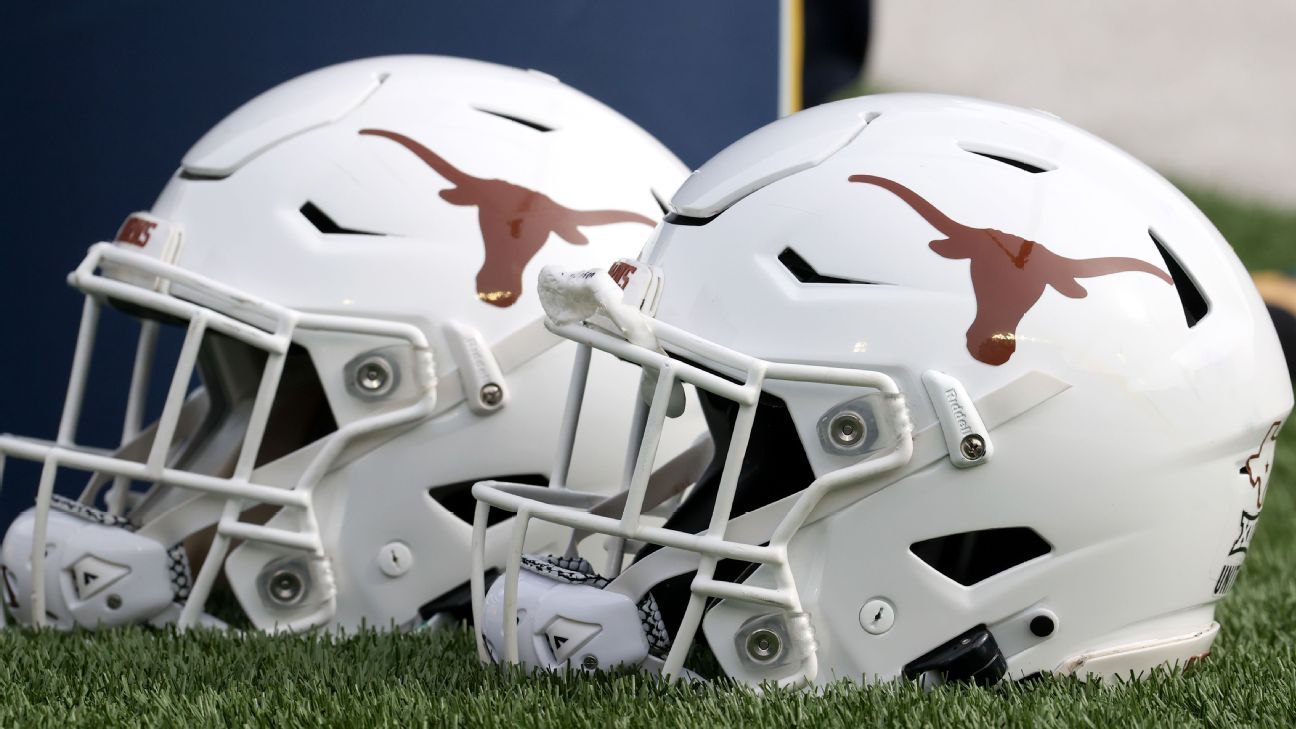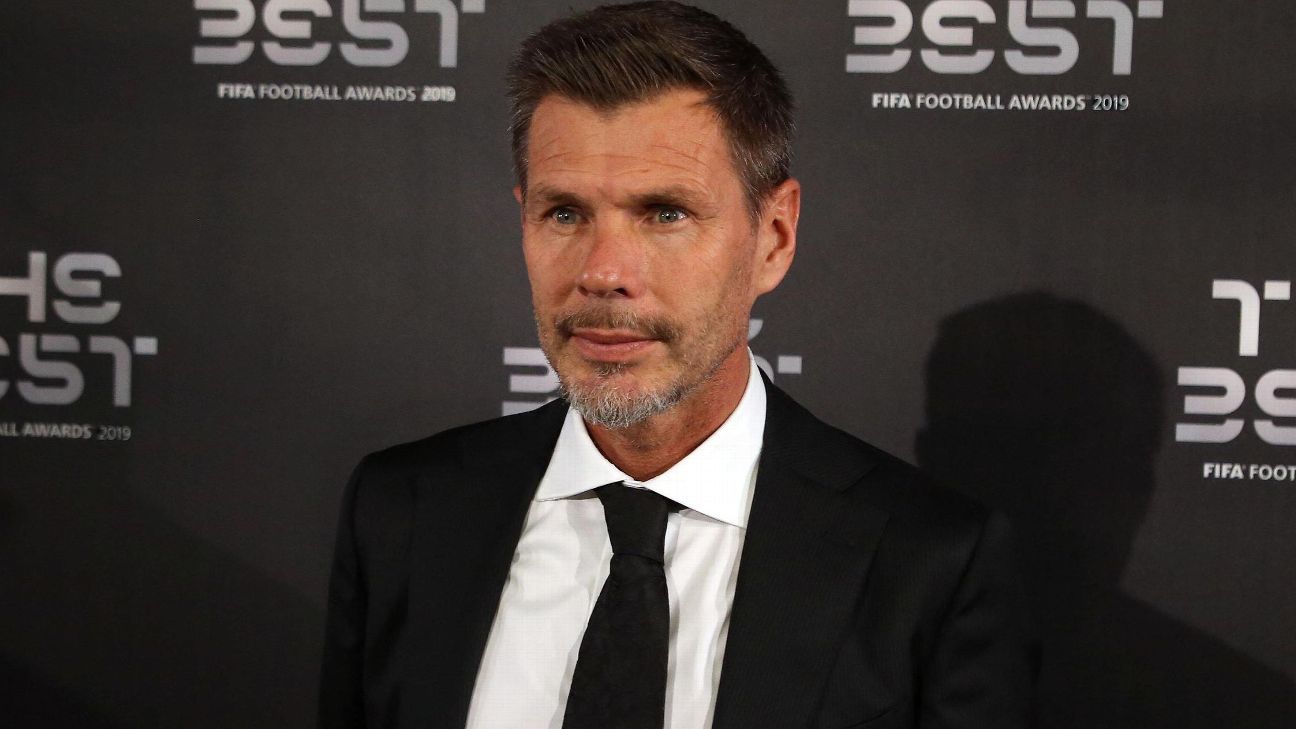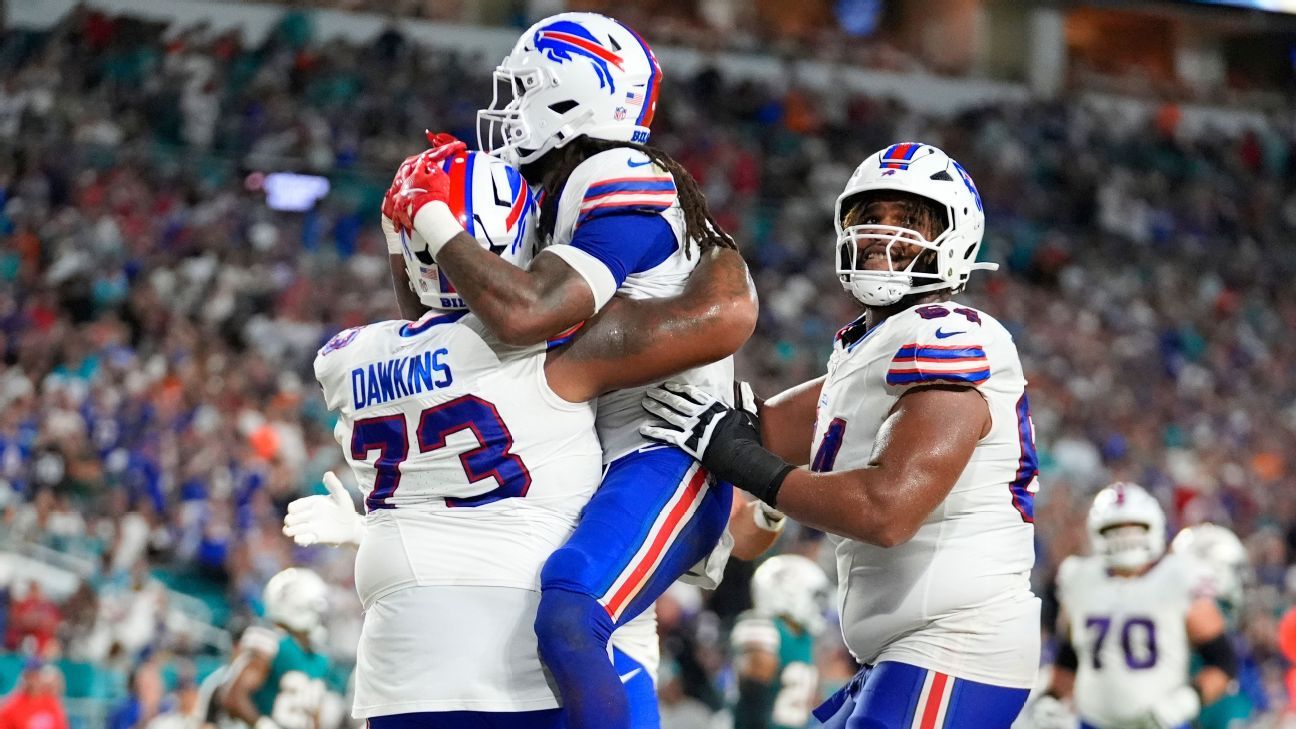The Big Ten is in discussions on a private capital agreement that would infuse at least $ 2 billion in the League and its schools, sources told ESPN on Wednesday.
The discussions include an extension of 10 years of the granting of rights of the League until 2046, sources told ESPN, which would guarantee long -term stability in the Big Ten.
According to sources, the private capital agreement and the extension of rights subsidy have been discussed for months and have been presented in multiple forms. An agreement and the granting of the extension of rights would also be a different blow to external entities that try to form super league around university sports.
While there is almost the entire league support, according to the sources, some of the largest brands in the League, including Ohio State and Michigan, are still in conversations with the League. The objective is to have unanimous support before a vote, sources told ESPN.
A decision on the private capital agreement is expected in the coming weeks of the Big Ten schools, the sources said, and nothing is considered imminent or safe. Big Ten Big Ten consider three private capital entities, sources told ESPN, and the League has not voted in any plan.
Like most companies, athletic departments can always use more money to cover the increasing costs. The need is particularly acute for schools with average and lower income within the League after the recent Legal Cases Agreement of the NCAA that has led to a direct exchange of income with athletes.
The configuration that is being discussed, said the sources, is that this will be essentially the formation of a new commercial entity within the Big Ten to host all generations of income, such as the rights of the media, sponsorships and income flows of the League.
The work title for the new entity is Big Ten Enterprises, sources told ESPN.
The private capital company would recover money through the new entity through the annual distribution in proportion to its financial participation. The Big Ten will essentially have 20 capital shares, which comprise the 18 schools, the league and this investor.
The sources told ESPN that this configuration eliminates the need to give an external investor a specific part of control over decisions or seats of the Board, something with which university presidents have generally felt uncomfortable.
“Think about it in this way: the conference is not selling a part of the conference,” said a source from the League to ESPN. “The traditional functions of the conference would continue to be 100 percent with the conference office: programming, offense and championships. The new entity that is created would focus on business development and include an external investor with a small financial participation.”
One of the philosophies behind the proposed movement, which is being grazing by the Big Tony Petitti commissioner, is that the League believes that its ability to generate income in an integral manner has been neglected, and would be sharing a small percentage of greater profits with the external investor.
It also helps the league potentially on scale and takes advantage of its 18 members.
Another source familiar with the discussions of the Big Ten summarized in this way: “We are uploading the strength of what we do in the way we are structured. This is a way of organizing better.”
As a micro example of that, the director Atlético de Nebraska, Troy Dannen, was summoned in an article by Associated Press last week about the imminent discussion of equipment that use corporate logos on his shirt: “If you jump now, and I will have a little [of money] Due to Jersey patches. I would really like to see if there is an opportunity for our conference to gather all those Jersey patch rights and, suddenly, they are worth much more for institutions when 18 are playing instead of only one. “
The potentially innovative plan, which has been presented at the 18 -member conference in recent months, requires immediate cash payments to each school, the amount based on a formula that factor in numerous variables, including current budgets.
The amount of these payments is still being discussed, but it is believed that the basic format, the sources told ESPN, are at levels. All school schools are expected to receive at least one amount of nine figures in advance.
Final financial details are still being discussed since universities with larger brands are expected to receive more money.
“Our membership has clearly expressed the need to modernize the operations and structure of our conference to ensure that BIG have a better positioned to offer the highest level of athletic and academic excellence in a rapidly evolving landscape,” said a Big Ten spokesperson in a statement when asked about the private capital.
“More than a year ago, we started an integral evaluation of our practices to identify associations that could ensure the financial stability of our member institutions and allow us not only to protect, but expand, opportunities for our athletes students. This is a continuous process, and we continue to find a path that strengthens the conference for the future.”












